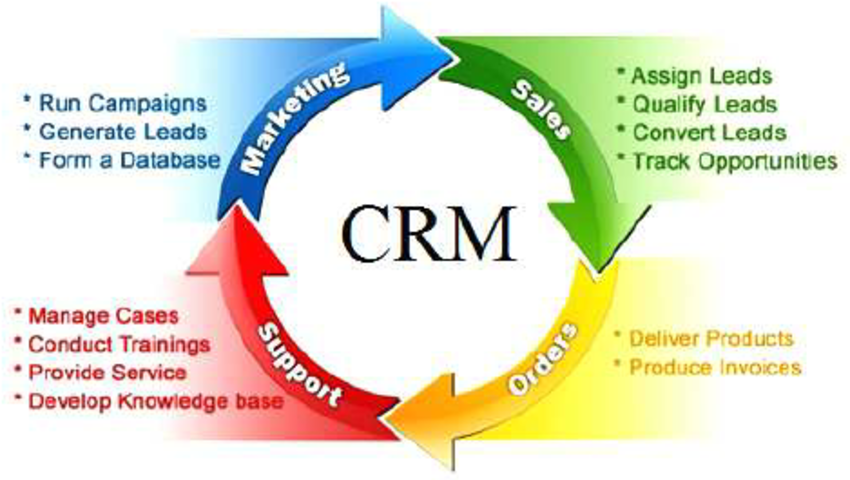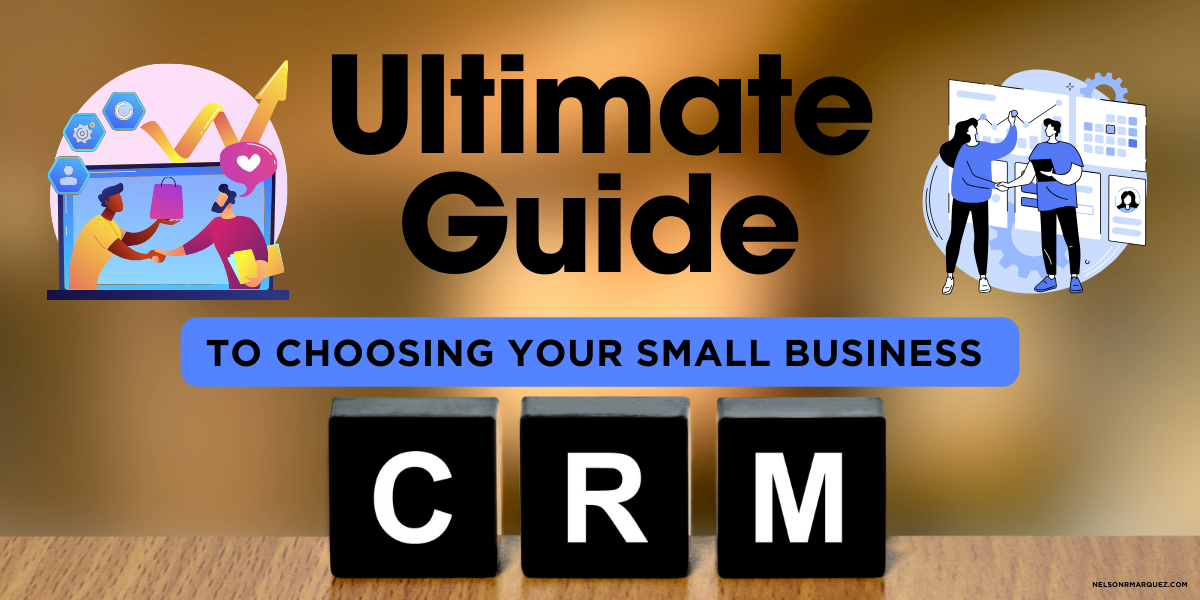
Unlock the Power of CRM: Your Secret Weapon for Marketing Success
In today’s hyper-competitive market, simply having a Customer Relationship Management (CRM) system isn’t enough. You need to wield it like a master strategist, optimizing every facet of your marketing efforts. This article dives deep into the art and science of CRM marketing optimization, providing you with actionable tips to transform your CRM into a revenue-generating powerhouse. We’ll explore proven strategies, cutting-edge techniques, and real-world examples to help you achieve explosive growth.
Think of your CRM as the central nervous system of your marketing and sales operations. It’s where you gather customer data, track interactions, and nurture leads. But a poorly optimized CRM is like a rusty engine – it can’t deliver peak performance. By implementing the optimization tips outlined below, you can refine your CRM, enhance customer experiences, and significantly boost your bottom line.
I. Laying the Foundation: Data Hygiene and Segmentation
A. The Cornerstone: Data Accuracy and Completeness
Garbage in, garbage out. This age-old adage holds particularly true for CRM systems. The quality of your data directly impacts the effectiveness of your marketing campaigns. Inaccurate, incomplete, or outdated data leads to wasted resources, irrelevant messaging, and frustrated customers. Before you embark on any optimization efforts, prioritize data hygiene.
- Regular Data Audits: Conduct periodic audits to identify and rectify errors, inconsistencies, and missing information. This involves reviewing data fields, verifying contact details, and ensuring data integrity.
- Data Cleansing Tools: Utilize data cleansing tools to automate the process of identifying and correcting errors. These tools can detect duplicates, standardize formatting, and validate contact information.
- Data Enrichment: Supplement your existing data with additional information from third-party sources. This can provide valuable insights into customer demographics, interests, and behaviors.
- Establish Data Entry Standards: Implement clear guidelines for data entry to ensure consistency and accuracy. This includes specifying required fields, formatting conventions, and data validation rules.
By investing in data hygiene, you’re building a solid foundation for all your marketing activities. Clean data enables you to create personalized campaigns, target the right audience, and measure the effectiveness of your efforts accurately.
B. Segmentation: Tailoring Your Message for Maximum Impact
Segmentation is the art of dividing your customer base into distinct groups based on shared characteristics. This allows you to tailor your marketing messages to resonate with each segment, increasing engagement and conversions. Think of it as crafting personalized conversations instead of sending generic broadcasts.
- Define Your Segments: Start by identifying key criteria for segmentation, such as demographics, purchase history, website behavior, and engagement levels.
- Create Customer Personas: Develop detailed profiles of your ideal customers within each segment. This helps you understand their needs, preferences, and pain points.
- Utilize Segmentation Tools: Leverage your CRM’s segmentation features to create and manage customer segments. Most CRM systems offer robust segmentation capabilities, allowing you to filter and group customers based on various criteria.
- Personalize Your Messaging: Once you’ve segmented your audience, tailor your marketing messages to address the specific needs and interests of each segment. Use personalized subject lines, content, and calls to action.
Effective segmentation allows you to deliver the right message to the right customer at the right time, maximizing the impact of your marketing campaigns. This leads to higher engagement rates, increased conversions, and improved customer loyalty.
II. Optimizing Your Marketing Workflows
A. Automation: Streamlining Your Processes
Automation is the key to efficiency in CRM marketing. By automating repetitive tasks, you can free up your team’s time and resources, allowing them to focus on more strategic initiatives. Automation also helps ensure consistency and accuracy in your marketing efforts.
- Email Marketing Automation: Automate your email marketing campaigns, including welcome emails, lead nurturing sequences, and abandoned cart reminders.
- Lead Scoring: Implement lead scoring to automatically prioritize leads based on their engagement and behavior. This helps your sales team focus on the most promising prospects.
- Workflow Automation: Automate various workflows, such as lead assignment, task creation, and data updates. This streamlines your processes and reduces manual effort.
- Personalization Tokens: Utilize personalization tokens to automatically insert customer-specific information into your marketing messages, such as their name, company, or purchase history.
Automation empowers you to scale your marketing efforts without increasing your workload. It also ensures that your customers receive timely and relevant communications, enhancing their overall experience.
B. Lead Nurturing: Guiding Prospects Through the Sales Funnel
Lead nurturing is the process of building relationships with potential customers and guiding them through the sales funnel. It involves providing valuable content, addressing their concerns, and building trust over time. Effective lead nurturing can significantly increase your conversion rates.
- Create Targeted Content: Develop a library of high-quality content that addresses the needs and interests of your target audience at each stage of the sales funnel. This includes blog posts, ebooks, webinars, and case studies.
- Implement Lead Nurturing Campaigns: Design automated email sequences that deliver relevant content to leads based on their behavior and engagement.
- Track Lead Engagement: Monitor lead engagement metrics, such as email opens, clicks, and website visits. This provides valuable insights into their interests and helps you tailor your messaging accordingly.
- Qualify Leads: Use lead scoring and qualification criteria to identify leads that are ready to be passed on to your sales team.
Lead nurturing is a long-term strategy that pays off in the form of increased conversions and improved customer relationships. By nurturing your leads, you’re building trust and establishing yourself as a thought leader in your industry.
C. Campaign Tracking and Reporting: Measuring Your Success
Without proper tracking and reporting, you’re flying blind. Campaign tracking allows you to monitor the performance of your marketing efforts and identify areas for improvement. Reporting provides valuable insights into your overall marketing effectiveness.
- Track Key Metrics: Monitor key performance indicators (KPIs) such as click-through rates, conversion rates, and return on investment (ROI).
- Use UTM Parameters: Utilize UTM parameters to track the source, medium, and campaign of your marketing activities. This provides valuable insights into which channels are driving the most traffic and conversions.
- Generate Reports: Create regular reports to analyze your marketing performance and identify trends.
- Analyze Your Data: Don’t just collect data; analyze it. Identify patterns, draw conclusions, and make data-driven decisions to optimize your marketing efforts.
Campaign tracking and reporting provide the data you need to make informed decisions and optimize your marketing strategies. By continuously monitoring your performance, you can identify areas for improvement and maximize your ROI.
III. Leveraging CRM Features for Enhanced Marketing
A. Integration: Connecting the Dots
Integrating your CRM with other marketing tools and platforms is crucial for creating a seamless and efficient marketing ecosystem. Integration allows you to share data, automate workflows, and gain a holistic view of your customer interactions.
- Email Marketing Platforms: Integrate your CRM with your email marketing platform to synchronize contact data, track email opens and clicks, and automate email campaigns.
- Social Media Platforms: Integrate your CRM with your social media platforms to track social media engagement, monitor brand mentions, and manage social media marketing campaigns.
- Website Analytics: Integrate your CRM with your website analytics platform to track website behavior, personalize website content, and identify high-value leads.
- Marketing Automation Platforms: Integrate your CRM with your marketing automation platform to create advanced lead nurturing sequences, automate marketing workflows, and personalize customer experiences.
Integration streamlines your marketing operations, reduces manual effort, and provides a more complete view of your customer interactions. This allows you to deliver more personalized and effective marketing campaigns.
B. Personalization: Tailoring the Customer Experience
Personalization is about delivering tailored experiences that resonate with individual customers. By leveraging the data stored in your CRM, you can personalize your marketing messages, website content, and customer interactions.
- Personalized Email Marketing: Use personalization tokens to insert customer-specific information into your email marketing campaigns, such as their name, company, or purchase history.
- Dynamic Website Content: Personalize your website content based on customer demographics, interests, and behavior.
- Personalized Recommendations: Offer personalized product recommendations based on customer purchase history, browsing behavior, and preferences.
- Targeted Advertising: Use CRM data to target your advertising campaigns to specific customer segments.
Personalization enhances the customer experience, increases engagement, and drives conversions. By making your customers feel valued and understood, you can build stronger relationships and foster loyalty.
C. Mobile Optimization: Reaching Customers on the Go
In today’s mobile-first world, it’s essential to optimize your CRM marketing efforts for mobile devices. This includes ensuring that your emails, website content, and customer interactions are mobile-friendly.
- Responsive Design: Use responsive design to ensure that your website and email templates adapt to different screen sizes.
- Mobile-Friendly Emails: Optimize your email templates for mobile devices, using short subject lines, concise content, and clear calls to action.
- Mobile CRM Apps: Utilize mobile CRM apps to access your customer data and manage your marketing activities on the go.
- SMS Marketing: Leverage SMS marketing to send targeted messages to your customers, such as appointment reminders, promotional offers, and order updates.
Mobile optimization ensures that your customers can access your marketing content and engage with your brand on any device. This enhances the customer experience and increases your reach.
IV. Advanced CRM Marketing Optimization Techniques
A. Predictive Analytics: Anticipating Customer Needs
Predictive analytics uses data to predict future customer behavior. By leveraging predictive analytics, you can anticipate customer needs, personalize your marketing efforts, and improve your overall marketing effectiveness.
- Customer Lifetime Value (CLTV) Modeling: Predict the future value of your customers based on their past behavior and interactions.
- Churn Prediction: Identify customers who are at risk of churning and take proactive steps to retain them.
- Recommendation Engines: Use recommendation engines to suggest products or services that are likely to interest your customers.
- Personalized Pricing: Offer personalized pricing based on customer demographics, purchase history, and behavior.
Predictive analytics allows you to proactively address customer needs and personalize your marketing efforts, leading to increased conversions and improved customer loyalty.
B. A/B Testing: Refining Your Strategies
A/B testing, also known as split testing, involves creating two versions of a marketing element, such as an email subject line or a website landing page, and testing them against each other to determine which performs better. This data-driven approach helps you refine your marketing strategies and optimize your results.
- Test Different Elements: Test different email subject lines, headlines, calls to action, and website layouts.
- Track Your Results: Monitor key metrics such as click-through rates, conversion rates, and ROI.
- Analyze Your Data: Analyze your results to identify which elements are performing best.
- Implement Your Findings: Implement the winning elements across your marketing campaigns.
A/B testing is an iterative process that allows you to continuously refine your marketing strategies and optimize your results. By testing different elements, you can identify what resonates with your target audience and improve your overall marketing effectiveness.
C. Customer Feedback and Surveys: Listening to Your Customers
Customer feedback and surveys provide valuable insights into your customers’ needs, preferences, and pain points. By listening to your customers, you can improve your products, services, and marketing efforts.
- Conduct Customer Surveys: Regularly survey your customers to gather feedback on their experience.
- Monitor Social Media: Monitor social media channels for brand mentions and customer feedback.
- Analyze Customer Reviews: Analyze customer reviews on websites and review platforms.
- Implement Feedback: Use customer feedback to improve your products, services, and marketing efforts.
Customer feedback and surveys provide valuable insights into your customers’ needs and preferences. By listening to your customers, you can improve your products, services, and marketing efforts, leading to increased customer satisfaction and loyalty.
V. Putting It All Together: A Roadmap for Success
Implementing CRM marketing optimization is an ongoing process, not a one-time fix. It requires a commitment to data hygiene, segmentation, automation, personalization, and continuous improvement. Here’s a roadmap to guide your journey:
- Assess Your Current CRM: Evaluate your current CRM setup, data quality, and marketing workflows. Identify areas for improvement.
- Define Your Goals: Set clear, measurable goals for your CRM marketing optimization efforts.
- Develop a Strategy: Create a detailed strategy that outlines your optimization plan, including data cleansing, segmentation, automation, and personalization strategies.
- Implement Your Plan: Start implementing your optimization plan, one step at a time.
- Monitor Your Results: Track your key metrics and monitor your progress.
- Make Adjustments: Continuously analyze your data and make adjustments to your strategies as needed.
- Train Your Team: Ensure that your team is trained on the new CRM features and processes.
- Stay Up-to-Date: Stay informed about the latest CRM marketing trends and best practices.
By following this roadmap, you can transform your CRM into a powerful marketing tool that drives revenue growth and strengthens customer relationships. Remember, CRM marketing optimization is a journey, not a destination. Embrace continuous improvement and stay focused on delivering value to your customers.
VI. Real-World Examples: Inspiring Success Stories
Let’s look at some real-world examples of how companies have successfully implemented CRM marketing optimization:
- Example 1: E-commerce Retailer: An e-commerce retailer used CRM data to segment its customer base by purchase history and browsing behavior. They then created personalized email campaigns that recommended products based on customer interests. This resulted in a 20% increase in click-through rates and a 15% increase in sales.
- Example 2: SaaS Company: A SaaS company implemented lead scoring to prioritize its sales efforts. They used CRM data to track lead engagement and behavior, and then automatically assigned leads to the sales team based on their score. This resulted in a 30% increase in sales qualified leads and a 10% reduction in the sales cycle.
- Example 3: Financial Services Provider: A financial services provider used CRM data to personalize its website content and landing pages. They created different versions of their website and landing pages based on customer demographics and interests. This resulted in a 25% increase in conversion rates.
These examples demonstrate the power of CRM marketing optimization. By implementing the strategies and techniques outlined in this article, you can achieve similar results.
VII. Common Pitfalls to Avoid
While the potential benefits of CRM marketing optimization are significant, it’s important to be aware of the common pitfalls that can hinder your progress:
- Poor Data Quality: As mentioned earlier, poor data quality is a major obstacle to success. Invest in data hygiene and data cleansing to ensure the accuracy and completeness of your data.
- Lack of Integration: Failing to integrate your CRM with other marketing tools and platforms can limit your ability to automate workflows and personalize customer experiences.
- Ignoring Customer Feedback: Failing to listen to your customers and gather feedback can prevent you from understanding their needs and improving your marketing efforts.
- Lack of Training: Failing to train your team on the CRM features and processes can lead to inefficiency and errors.
- Over-Reliance on Automation: While automation is important, don’t over-rely on it. Remember to personalize your marketing messages and provide a human touch.
- Failing to Measure Results: Failing to track key metrics and measure your results can prevent you from identifying areas for improvement.
By avoiding these pitfalls, you can increase your chances of success and maximize your ROI.
VIII. Conclusion: Embrace the Future of Marketing
CRM marketing optimization is no longer a luxury; it’s a necessity. By implementing the strategies and techniques outlined in this article, you can transform your CRM into a powerful marketing tool that drives revenue growth and strengthens customer relationships. Embrace the future of marketing and unlock the full potential of your CRM. Start optimizing today and watch your sales soar!
The journey to CRM marketing optimization is a continuous one. Stay curious, experiment with new techniques, and always put your customers at the heart of your strategy. The rewards – increased sales, improved customer loyalty, and a stronger brand – are well worth the effort.

